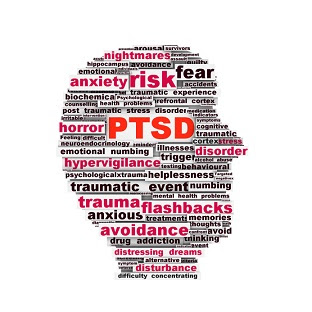The sale of turtles less than 4 inches has been
banned in the United States since 1975 because turtles pose a
high risk of spreading salmonellosis, especially to children. In 1975, I was already working as a writer and was a whopping 25-year-old woman who knew of the ban on small turtles.
But as a young child in the 1950s in the living room of our very small house, I didn't know it yet. I could smell the stench from our turtle in the appropriately named turtle bowl with its fake palm leaves sitting next to our over-heated radiator. If my mother didn't clean the turtle bowl for a week, and a week was all it took, the turtle bowl would stink because of the grossly wilted lettuce that served as food for the turtle that became slime short of a week's time. The turtles died (we had seventeen of them, one at a time) and my mother flushed them down the toilet. I remember us standing over the toilet and saying our tearful goodbyes as the turtles whooshed away in that maelstrom.
At the end of my teenage years, we moved to a bigger house and I forgot about the turtle bowl as, apparently, did my mother. We were almost grown then, my brother and I, and a turtle bowl would be an unwelcome annoyance because we would have to clean it, the responsibility that my mother would have passed on to us.
Jump ahead a little more than forty years. That's when I had my hemorrhagic stroke. Now, I smell that rancid turtle bowl again when it isn't present. Why? Could I be having smell hallucinations to add to my never-ending repertoire?
Ronald DeVere, M.D., Fellow of the American Academy of Neurology (AAN), is the director of the Taste and Smell Disorder Clinic in Austin, TX, has been evaluating patients with taste and smell disorders. Dr. DeVere is also the coauthor, with Marjorie Calvert, of the AAN's patient book, Navigating Smell and Taste Disorders.
In the thoughts of Dr. DeVere, "olfactory hallucinations are perceived abnormal smells—usually unpleasant—that are not actually present in the physical environment. They can come from a number of different areas of the smell system. If the smell continues for less than a few minutes, the site of origin is likely the smell region of the inner temporal lobe of the brain, called the uncus. The source could be an abnormal electrical discharge or a seizure."
I was stuck with the turtle bowl. Potential causes, says Dr. DeVere, among others, of this abnormality, aka hallucination, could be a stroke or an injury following head trauma. (Almost all stroke survivors have head trauma, or PTSD. See http://stroketales.blogspot.com/search?updated-min=2016-08-01T00:00:00-04:00&updated-max=2016-09-01T00:00:00-04:00&max-results=2). An MRI and a brain-wave test are what are needed to confirm through an imaging study of the brain. There is no cure yet that is FDA-approved.
There are worse things to smell than a turtle bowl but, at the moment, I can't think of any.
But as a young child in the 1950s in the living room of our very small house, I didn't know it yet. I could smell the stench from our turtle in the appropriately named turtle bowl with its fake palm leaves sitting next to our over-heated radiator. If my mother didn't clean the turtle bowl for a week, and a week was all it took, the turtle bowl would stink because of the grossly wilted lettuce that served as food for the turtle that became slime short of a week's time. The turtles died (we had seventeen of them, one at a time) and my mother flushed them down the toilet. I remember us standing over the toilet and saying our tearful goodbyes as the turtles whooshed away in that maelstrom.
At the end of my teenage years, we moved to a bigger house and I forgot about the turtle bowl as, apparently, did my mother. We were almost grown then, my brother and I, and a turtle bowl would be an unwelcome annoyance because we would have to clean it, the responsibility that my mother would have passed on to us.
Jump ahead a little more than forty years. That's when I had my hemorrhagic stroke. Now, I smell that rancid turtle bowl again when it isn't present. Why? Could I be having smell hallucinations to add to my never-ending repertoire?
Ronald DeVere, M.D., Fellow of the American Academy of Neurology (AAN), is the director of the Taste and Smell Disorder Clinic in Austin, TX, has been evaluating patients with taste and smell disorders. Dr. DeVere is also the coauthor, with Marjorie Calvert, of the AAN's patient book, Navigating Smell and Taste Disorders.
In the thoughts of Dr. DeVere, "olfactory hallucinations are perceived abnormal smells—usually unpleasant—that are not actually present in the physical environment. They can come from a number of different areas of the smell system. If the smell continues for less than a few minutes, the site of origin is likely the smell region of the inner temporal lobe of the brain, called the uncus. The source could be an abnormal electrical discharge or a seizure."
I was stuck with the turtle bowl. Potential causes, says Dr. DeVere, among others, of this abnormality, aka hallucination, could be a stroke or an injury following head trauma. (Almost all stroke survivors have head trauma, or PTSD. See http://stroketales.blogspot.com/search?updated-min=2016-08-01T00:00:00-04:00&updated-max=2016-09-01T00:00:00-04:00&max-results=2). An MRI and a brain-wave test are what are needed to confirm through an imaging study of the brain. There is no cure yet that is FDA-approved.
There are worse things to smell than a turtle bowl but, at the moment, I can't think of any.





















